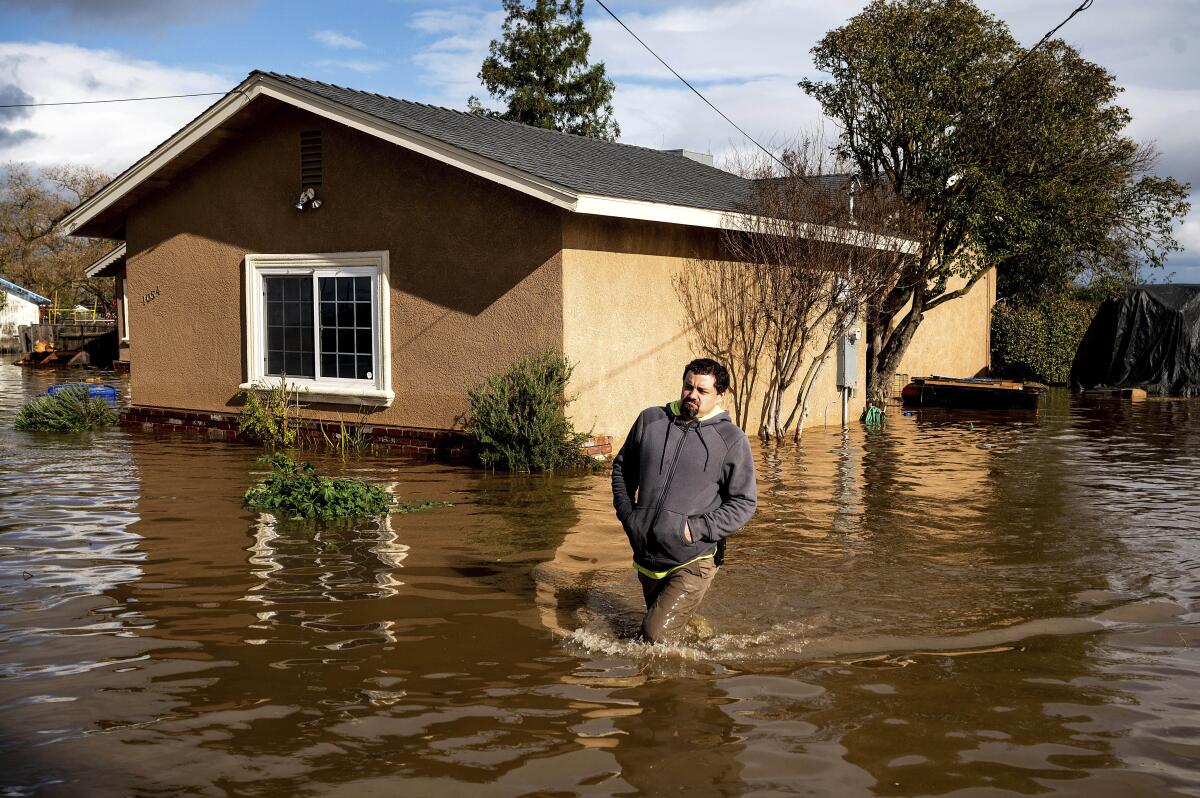California storm costs could add up to nation’s first billion-dollar disaster of 2023

As severe storms continue to hit California, a climate expert warns that the costs to the state could be in excess of $1 billion.
The total is a reflection of “physical damage to homes, businesses and municipal properties,” said Adam Smith, an applied climatologist and disaster expert with the National Oceanic and Atmospheric Administration.
Smith is the lead researcher for NOAA’s “U.S. Billion-Dollar Weather and Climate Disasters” report, which catalogs 18 such disasters from 2022. He has reason to believe that the atmospheric river producing storms in California may join this year’s list.
“Clearly, when everything is said and done after weeks of atmospheric rivers,” Smith said, he “would not be surprised if this was the first billion-dollar event of 2023.”
Other major costs could include lost productivity for individuals and businesses due to evacuation, agricultural damage from flooding and damage to boats and piers along the coast, Smith said.
An often-overlooked cost associated with disasters is damage to public infrastructure, he noted. Damage to roads, bridges, levees and electrical systems would be toted up by NOAA but disregarded by the public as they assess their personal losses, he said. In 2017, winter storm damage to California’s roads, bridges and highways cost more than $860 million.
As for 2022, here are some highlights from the NOAA report:
- Billion-dollar disasters cost the country $165 billion last year, up from $155.3 billion in 2021. The numbers are adjusted for inflation.
- The only years more expensive than 2022 were 2017 and 2005.
- California made the billion-dollar list with its drought and heat wave, which, at $22.2 billion, was the nation’s second-most-expensive disaster of the year.
- From 2017 to 2021, there were only 18 days between billion-dollar disasters, on average. In the 1980s, the gap was 82 days. “Shorter time intervals between disasters often mean less time and resources available to respond, recover and prepare for future events,” the report says.
At a news conference Tuesday in Capitola in Santa Cruz County, California Natural Resources Secretary Wade Crowfoot said the state hopes to secure an additional $202 million for flood protection from the Legislature.
“This, by the way, is all on top of the $738 million the last 24 months that we have approved for flood protection,” said Crowfoot, as well as $2.4 billion in federal funds over the last five years for the purpose, with more to come from the infrastructure bill.
Will Arnold, a Caltrans spokesman, said the agency had yet to tally up expected costs from the atmospheric river.
“Right now, we’re still in emergency mode and awaiting the next storm,” he said.
More to Read
Sign up for Essential California
The most important California stories and recommendations in your inbox every morning.
You may occasionally receive promotional content from the Los Angeles Times.











